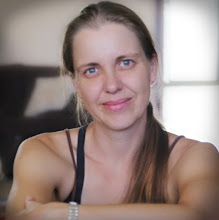
Have you ever looked at a landscape photograph and wondered how the photographer got every single detail in the picture looking sharp and focussed, right from the very foreground to the far distance?
Including a close foreground to your picture adds a real sense of depth, sometimes giving the impression that you could just walk into the picture, but the difficulty is getting it in focus along with the rest of the picture.
Well here's how to get a big "depth of field"
Well here's how to get a big "depth of field"
What you will need: An SLR (digital or otherwise) or any camera that allows you to set aperture and focus anda tripod or something to rest your camera on.
First of all, choose a relatively wide angle focal length (ie not telephoto or zoomed right in) because that helps to increase your depth of field (the amount of the scene in focus).
Next, set your camera to manual or aperture priority mode.
Choose your smallest aperture - strangely enough that's the one with the biggest number (ie f/22)
Set up your camera on a tripod or something solid (where it will stay still, and very importantly not fall off and break!). You need to do this because your exposure will take longer with a small aperture, so you might get camera shake if you hand-hold it. Particularly if you've set the ISO to something like 100 or 50 to get the cleanest, most noise-free image you can.
Set your focus to manual and focus on a point about a third of the way into your frame. If you have a depth of field preview button you can now check what's in focus and adjust your focus as necessary.
If you have your camera mode set to manual rather than aperture priority, you will need to set the shutter speed to get the correct exposure (your inbuilt camera metering will help you do this).
Now to take the shot. If you have a remote shutter release, this is ideal because you can easily avoid touching and potentially shaking the camera. If you don't you can set the timer and that way avoid touching it at the time it takes the shot.
If you've got a digital camera you can now check your shot to see if you managed to get it all sharp or if you need to adjust your point of focus closer or futher away.
And that's it! Go practise and have fun!
Notes:
Depth of field
Depth of field (DOF) is the amount of the scene that appears to be in focus. A narrow depth of field is great for portraits, wildlife, or anything you want to really make stand out from the background (ie subject in focus, background blurred). A large depth of field is the norm for landscapes and story-telling images.
DOF is affected by focal length (narrower for telephoto, larger for wide-angle), aperture (narrower for wide aperture, larger for small aperture), and the distance from the point of focus (narrower for closer, larger for further away).
Aperture
The aperture setting is the size of the opening that lets light into the camera and onto the film or sensor. A small aperture is indicated by a big f-number ie f/22, and vise-versa - a big aperture is indicated by a small f-number ie f/1.8. Due to diffraction, the image gets fuzzier with very small apertures. Crop-sensor cameras (the majority on the market at the moment) should ideally be set at no smaller than f/16 to achieve acceptable sharpness, and this should give a similar depth-of-field to a full-frame sensor camera with a smaller aperture setting.
ISO
This is the sensitivity of your film or sensor to light. In digital cameras you can set this on a whim for each shot, with film you have to decide on your ISO when you buy your film. The higher the ISO, the more sesitive the film/sensor is to light. You can get a faster exposure time in low light with a high ISO, which has lots of advantages, but you also get more grain/noise in your final shot. Most landscape photographers prefer to set the ISO as small as possible to get the cleanest, crispest image, and the resulting long exposure time (by also using a small aperture) usually makes a tripod essential.
More of my landscape photography - First Light Gallery
